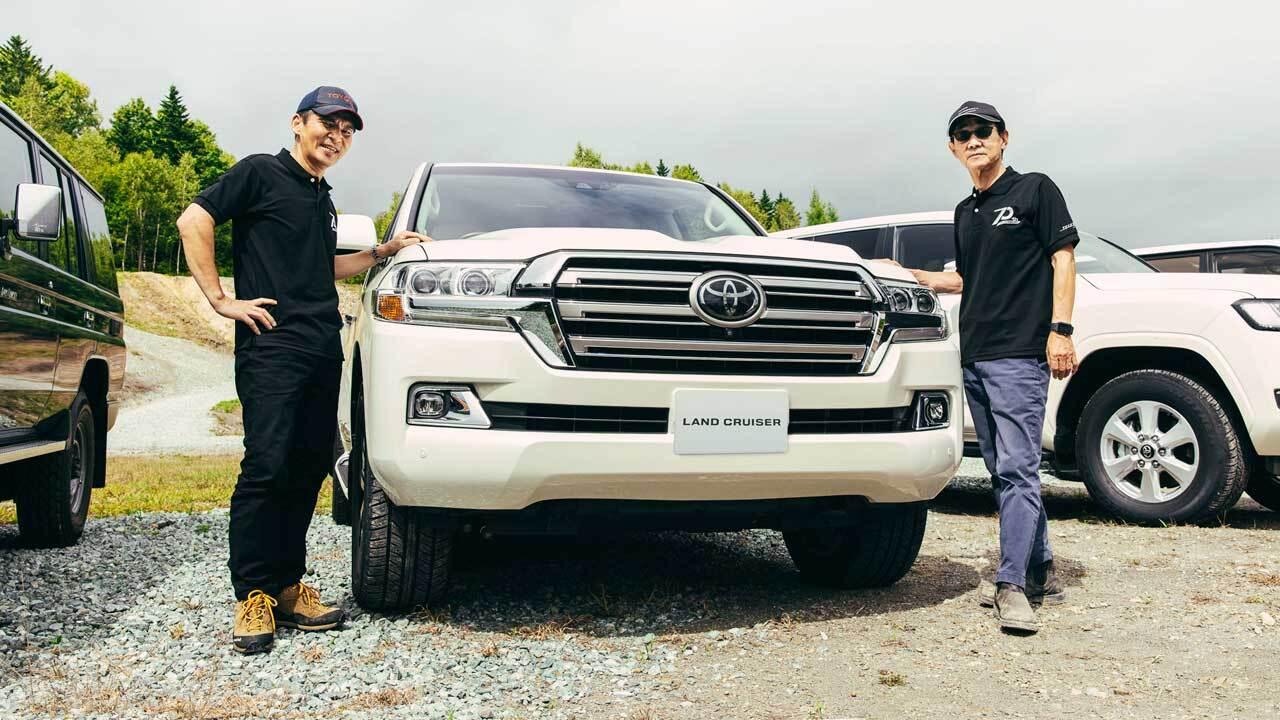
At Toyota, there is a test driver who has played a key role for over 40 years in not just testing the vehicles but also building roads that ensure the Land Cruiser's "reliability," "durability" and "drivability on rough terrain".

A test driver who has been involved in the development of the Land Cruiser for nearly 40 years during its 70-year history
Sadayoshi Koyari, also known as “Mr. Land Cruiser” among Land Cruiser fans throughout the world for his many years of involvement in developing the series, says there is one person you cannot avoid mentioning when talking about the vehicle. That person is the test driver, Takanobu Fukuoka.
The numerous electronic control systems, KDSS (Kinetic Dynamic Suspension System), Multi-Terrain Monitor, Multi-Terrain Select, Crawl Control, Active Traction Control, Turn-Assist function, E-KDSS (Electronic Kinetic Dynamic Suspension System) and other functions that have recently dramatically improved the drivability of the Land Cruiser on rough terrain, all stem from Fukuoka’s inventiveness.

Toyota’s Shibetsu Proving Ground has the off-road test course Fukuoka constructed in developing the Land Cruiser. There, Fukuoka and Koyari were interviewed at the F-Course named after Fukuoka.
Fukuoka joined Toyota 50 years ago, in 1971. He was assigned to the Vehicle Performance Testing Section of Engineering Division No. 3, where he became a test driver. He reflects on the past saying, “At the time I joined the division, my supervisor made unreasonable demands, like asking me to remove the transmission from a Toyota 2000GT, but it was fun. Becoming a test driver for passenger vehicles was like a dream job.”

He was in charge of testing and evaluating the first-generation Century, Celica and Carina for over 10 years, but in 1982, he was ordered to switch to evaluating and developing commercial vehicles. He began with the compact cross-country 4WD, Blizzard, moving on to evaluate successive series of Land Cruisers, including the 60, 70, 80, 90, 100, 105, 120, 150 and 200 Series. He retired when he turned 65 in 2016, but has continued his involvement in the advanced development of the latest 300 Series as Senior Technical Advisor at Toyota Customizing & Development Co., Ltd. (former Toyota Technocraft Co., Ltd.). He has been involved in developing the Land Cruiser for almost 40 years during its 70-year history. He lives up to his nickname, “Land Cruiser Meister.”
With Fukuoka’s unparalleled knowledge and experience in off-road driving, he is currently involved in developing specialized tires, as well as designing and building off-road driving courses at various test sites around the country.
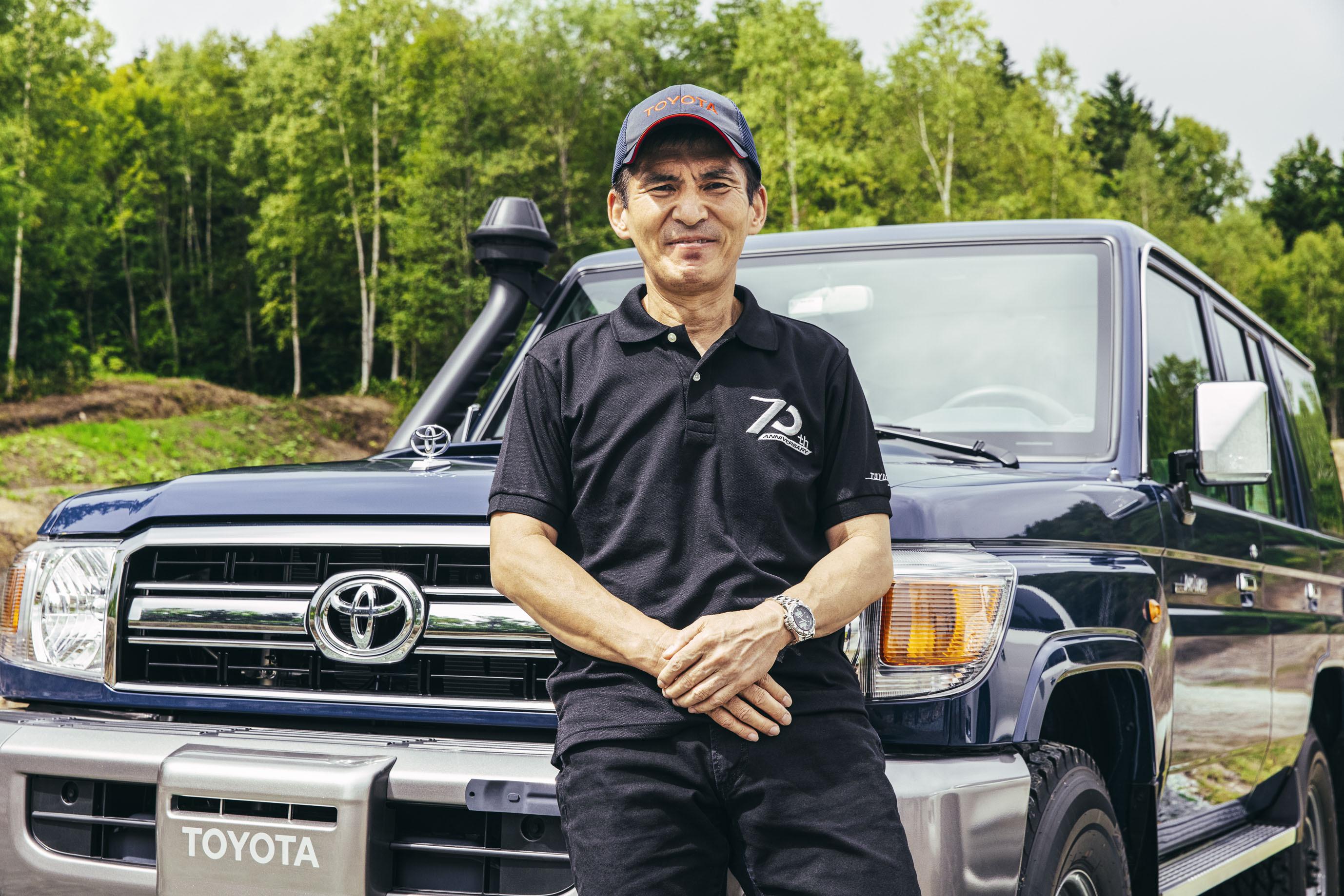
Shibetsu Proving Ground is one of the biggest test sites in Hokkaido featuring numerous test courses used by automobile and tire manufacturers. A cold-climate testing track was completed in 1984, followed eventually by the construction of a banked 10-km high-speed testing track. The site covers an area of 9.3 million square meters, which is bigger than Asahikawa Airport.
However, what sets this test course apart from others is not just its size, but the variety of course layouts and road surfaces that also simulate overseas driving conditions. It is also located in inland northern Hokkaido, so temperatures fluctuate greatly throughout the year, with high-speed driving tests being carried out in summer, while cold-climate driving tests are carried out in winter, allowing the honing of all Toyota and Lexus cars.
The first-generation Celsior launched in 1989 was praised as being proof that Toyota had attained a higher level of performance in power and silence. This was achieved thanks to completion of the Shibetsu Proving Ground. It was a true example of “roads building cars.”

How the development of passenger vehicles made a difference to the performance of Land Cruisers
Koyari was the first to speak.
Koyari
I joined the Land Cruiser development team in 1985, and the Land Cruiser’s core values of “reliability,” “durability” and “drivability on rough terrain” were hammered into me by Fukuoka. Fukuoka was young at the time, so he was a lot stricter than he is now. I remember feeling disheartened when he told me, “You can’t expect to become an engineer without knowing how to handle this car”.
I love driving cars, and I drove in rallies from when I was a college student until I turned 40. But as for off-road driving, Fukuoka was the man who taught me everything from square one.
Koyari says Fukuoka has the spirit of a craftsman. He doesn’t talk much, but has a clear view of what he wants to do, and makes no compromises. At times, he would argue so passionately with his supervisors that it was almost scary to watch.
Fukuoka
In the 45 years I have been with the company, I was involved in the development of passenger cars for about the first 11 years. After that, I worked on nothing but the Land Cruiser. Nowadays, developing SUVs is like a dream job, but the Land Cruiser 60 that I began working on was simply regarded as a commercial vehicle at the time, so I remember feeling shocked at the thought of being transferred to “a department that develops trucks.”
But I came to realize that the true value of a 4WD vehicle lay not in whether it was intended for use by passengers or for commercial use, but its ability to get to places where no passenger vehicle could go. I braced myself to take on the development of the Land Cruiser, but eventually grew to love it. Developing a 4WD vehicle like the Land Cruiser requires a different set of standards with a huge number of reliability and durability criteria that have to be cleared. My supervisors told me to push the vehicle to the limit, which I did over and over again. It was hard work, but I began to enjoy it.
All Toyota cars have to clear the TS (Toyota Standard) for quality, but did the Land Cruiser have an additional set of original standards for off-road durability?

Fukuoka
Exactly. But the problem was that discrepancies eventually arose during testing between the TS and the Land Cruiser standards you have to clear. To overcome this problem, we had to lay down new off-road standards and review the TS itself. We also began tests to not only verify durability, but also drivability on rough terrain. I may sound like I’m boasting, but I believe customers began praising the Land Cruiser’s off-road performance after I became involved in its development.
Up to the 60 Series, the Land Cruiser was made to be a commercial vehicle for driving on rough terrain, but in developing the 70 Series, we tested them on roads outside the company test course to further enhance their drivability on rough terrain. At the time, I remember test driving the Land Cruiser with a supervisor on some embankments near Tahara Plant. When we fell into a big hole, the leaf spring (stacked spring steel used as a suspension) became inverted and the shackle* was completely elongated in the opposite direction. We were surprised that such a thing could happen, and it led to the development of parts that would prevent this.
*A metallic part used to attach the leaf spring to the body or frame“A wise person profits from his mistakes,” so they say, and this episode testifies to Fukuoka’s attitude. He continued.
Fukuoka
As I said, the 70 Series boosted the Land Cruiser’s drivability on rough terrain. But driving it also required the driver to have a certain amount of skill. So, we decided to make it easier to drive. This gave birth to the idea for Multi-Terrain Select and Active Traction Control. We realized there was a need to adopt the kind of features found in passenger cars so that users would find off-road driving enjoyable.
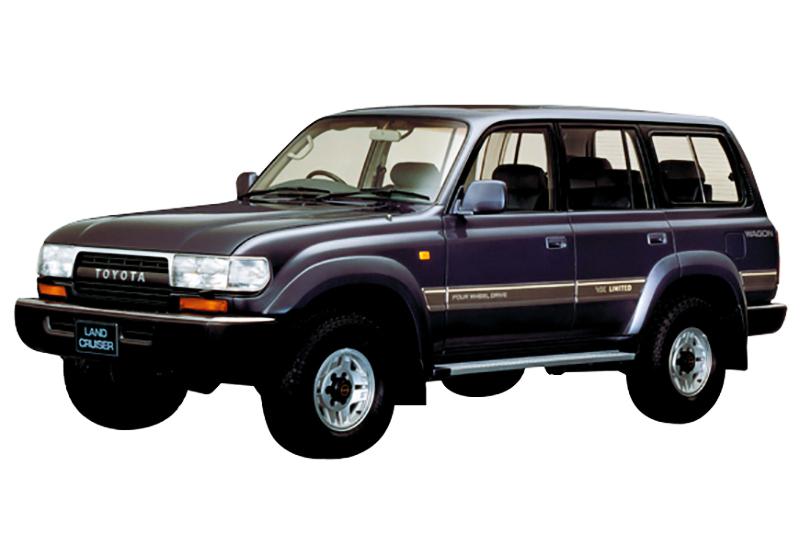
Koyari reflects on the time he was assigned to the development of the Land Cruiser as a young engineer.
Koyari
The Land Cruiser at the time didn’t have the image of being a car for enjoying off-road driving. Around the 1980s, the Mitsubishi Pajero was a good example of a 4WD vehicle promoted as being a car for enjoying off-road driving. Toyota, too, had a car for driving on rough terrain that was highly reliable and durable, so it was time to review the concept behind our Land Cruiser.
It was around the time our wagon-type vehicles evolved from the 60 to 80 Series. We launched the Prado as a light duty model just after the heavy duty 70 Series, to meet the extensive needs of customers. Fukuoka began by developing passenger cars, and I think the ideas he cultivated through his involvement in Land Cruisers culminated in this Land Cruiser family series.
Then from the 80s to 90s, the Land Cruiser underwent dramatic evolution through the 80 Series. Up to the 70 Series, it was taken for granted that off-road vehicles would have rigid suspensions and leaf springs for greater durability and drivability on rough terrain, but the 80 Series changed all that by deploying coil springs normally used in passenger cars.
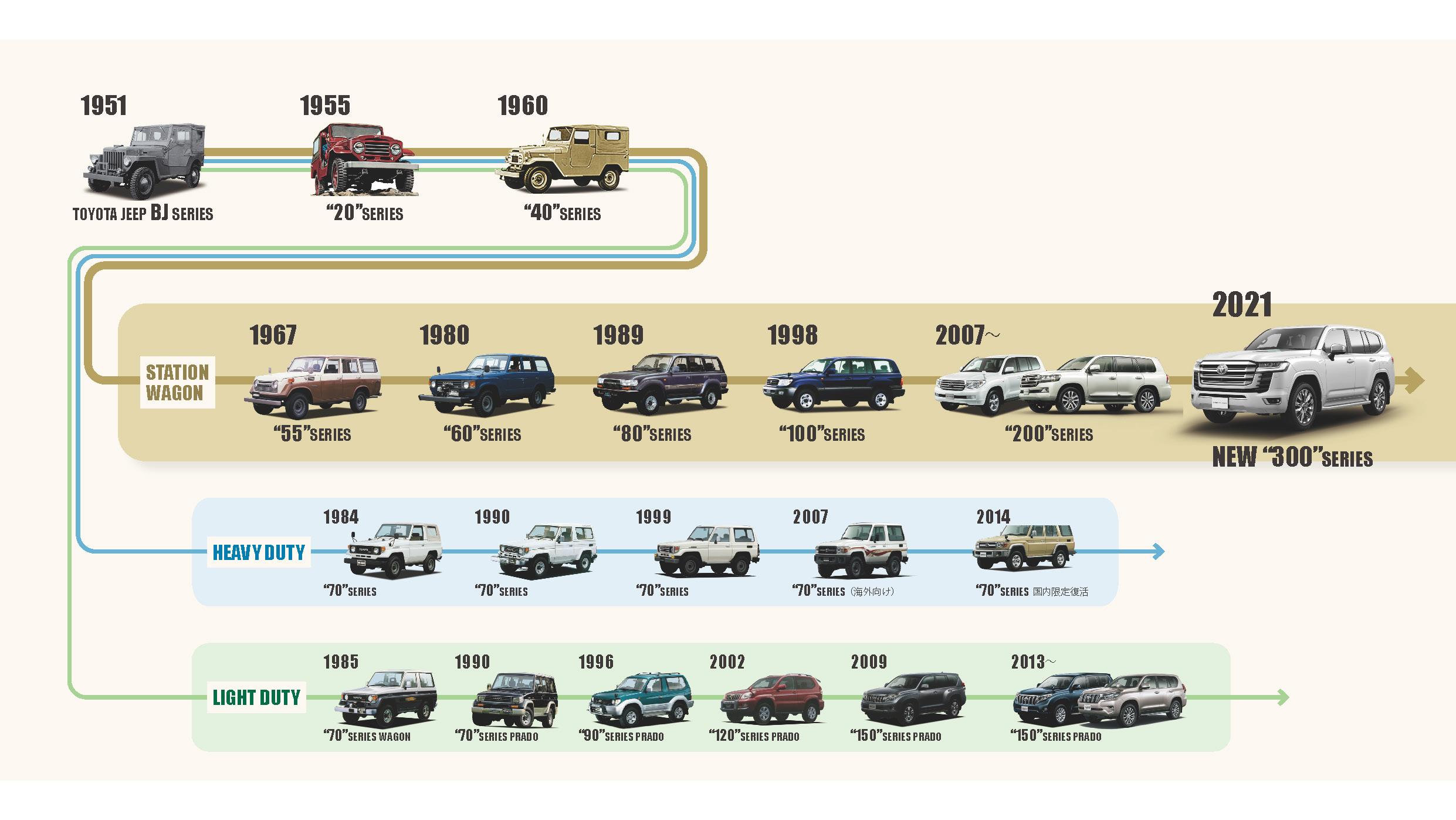
Cross-country vehicles like the Land Cruiser were popular around the time of the 70 to 80 Series, and Fukuoka recalls how electronic control technology became mainstream.
Fukuoka
It’s important in off-road driving for the suspensions to have sufficient stroke to make sure the tires remain in contact with the ground. It’s only when you have such basic capabilities for handling rough terrain that people will enjoy driving. This is what we pursued in developing the 80 Series and the first-generation Prado. We began with the deployment of coil springs in the 80 Series. Then in the 100 and 200 Series, we began installing all kinds of electronic control systems, and we concentrated on building a car that could be driven by anyone, while ensuring reliability.
In addition to the Land Cruiser’s indispensable attributes of reliability, durability and drivability on rough terrain, the goal of development was to make sure anyone could drive the car in comfort. This has been passed down to the latest 300 Series developed on the concept of easy off-road handling and drivability, based on Takami Yokoo’s experience in taking part in the Five Continents Drive Project.* At this point, Koyari shared his thoughts.
*Based on the “roads train people, and people make cars” ethos that underpins Toyota’s motorsports activities, this project involves Toyota employees driving across five continents as a way to “make ever-better cars” by developing the people who build them.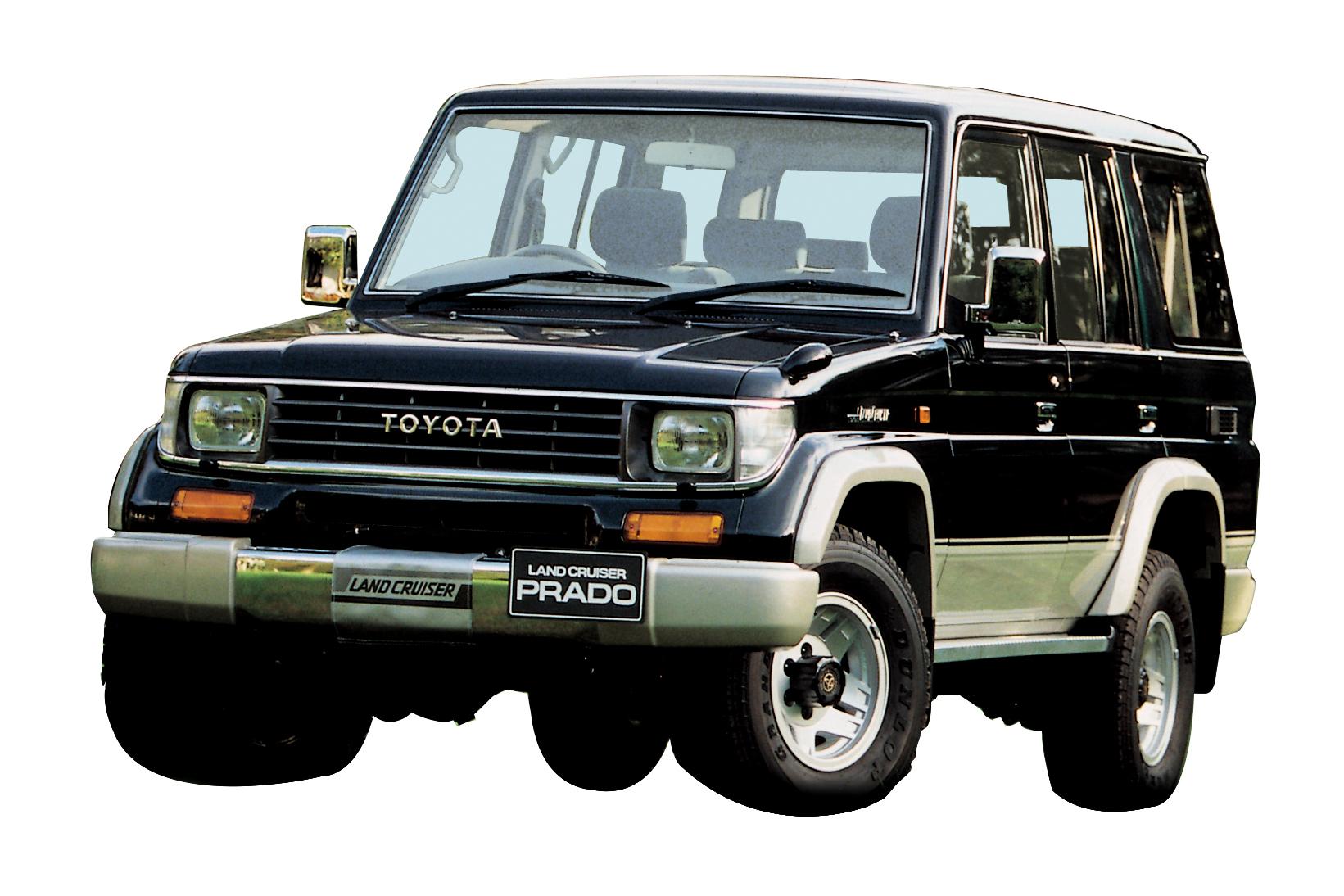
Koyari
There are three things I look for in professionals, and they all come from the influence that Fukuoka has had on me. First, they not only have to be good drivers, but they have to be able to realize their ideas and dreams in projects (kaizen skills). Next, they have to have thorough knowledge of driving conditions and the cars of our competitors throughout the world (evaluation skills). Then they must also have full knowledge of the way customers throughout the world use or drive their cars, and be capable of simulating their driving to draw out the vehicle’s performance (driving skills).
Fukuoka is a man full of ideas. He has an exceptional ability to not only come up with ideas, but also give shape to them. This F-Course in Shibetsu is the epitome of his entire career. Everything he has gained from his experience in driving off-road all over the world has been packed into this course.
The F-Course constructed manually by Fukuoka and two others in charge of managing the course
An off-road course was needed to test the Land Cruiser’s drivability on rough terrain, leading to the construction of the F-Course around 2011, after company executives at the time asserted that the Shibetsu Proving Ground should be used. Fukuoka explains.
Fukuoka
Conditions began to change, and things we used to test outside the company became no longer possible. During development, we often used to test our cars overseas on rough terrain that couldn’t be found in Japan. But we could streamline development if we had a test course in Japan.
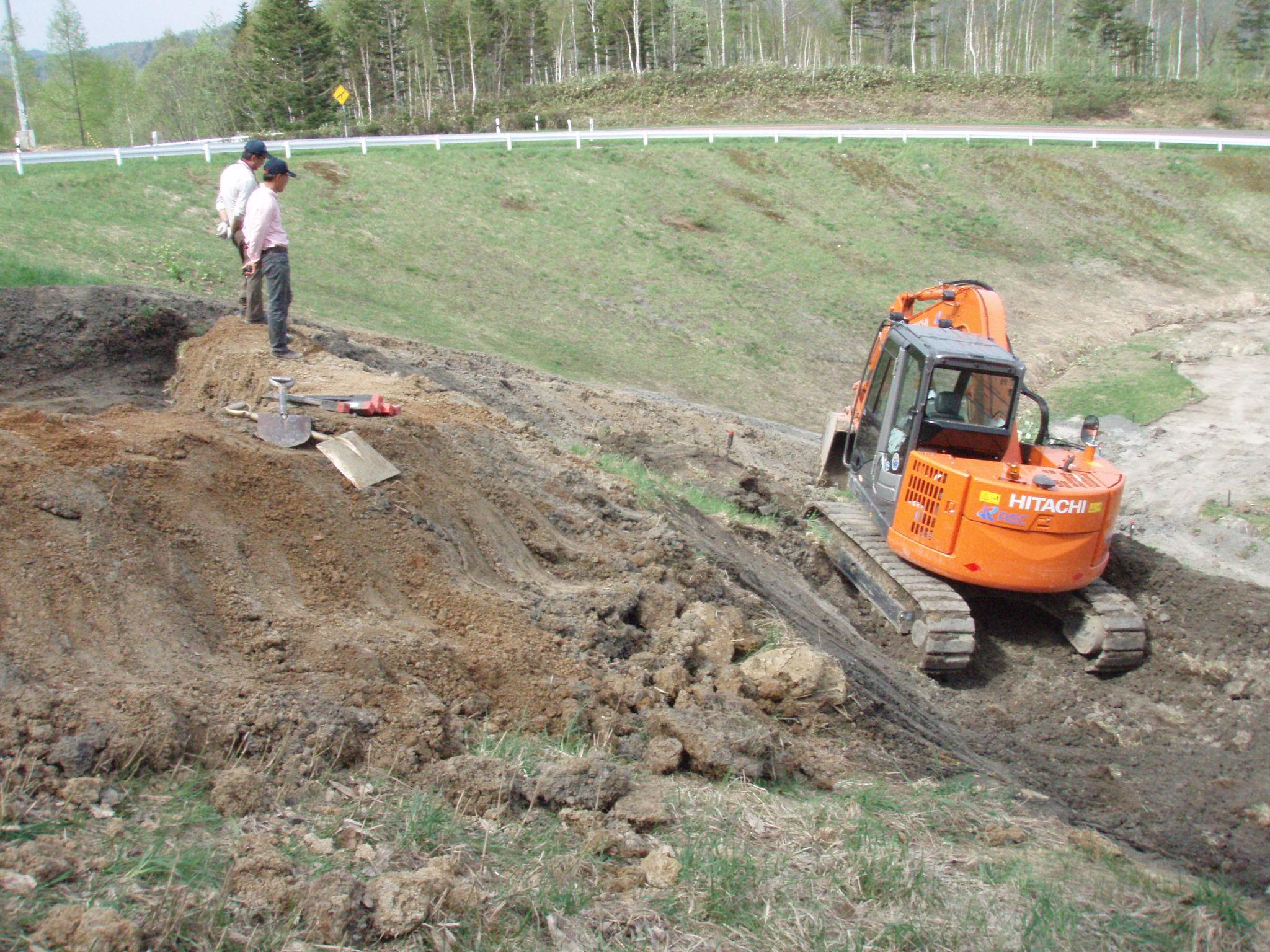
The project to construct a new off-road testing facility began with the search for a site in Shibetsu, where cars could be driven under a variety of weather conditions. Tetsuo Sawada and Takashi Fujita of the Vehicle Engineering Development Division, placed in charge of managing the course, joined the project as specialists in handling heavy machinery. The two men reflect on what happened at the time.
Sawada
Fukuoka and I drove to the area in a Land Cruiser to check it out, and he caught me off guard on numerous occasions, because every time he found a steep hill, he would try to climb it. We decided the current location was best due to various conditions, including water and drainage.
Fujita
Construction began in 2013, and everything was completed in 2014. Shibetsu was hit by a huge heat wave in the summer of 2013, but we worked steadily under Fukuoka’s supervision, who told us to “dig here,” “place rocks there,” and so on.
It was a civil engineering project, but instead of outsourcing the work, everything was done by company employees under Fukuoka’s supervision with the help of Sawada and Fujita who were masters at operating heavy machinery. The work was far removed from what is required of conventional course management, and in response to the behind-the-scenes stories told by the two men who were placed in charge of this unprecedented project, Fukuoka at times pretended he was shaken or he would nod his head conspicuously. Then he spoke.
Fukuoka
It was a really hot summer. We placed these rocks on the ground one at a time, then checked to make sure they were firmly in place in constructing the rock road. Sections were classified according to the size of the rocks used so that we could evaluate SUVs like the RAV4. But it was really physically demanding placing them on the ground one at a time, while thinking about their shape and orientation, under the blazing sun.
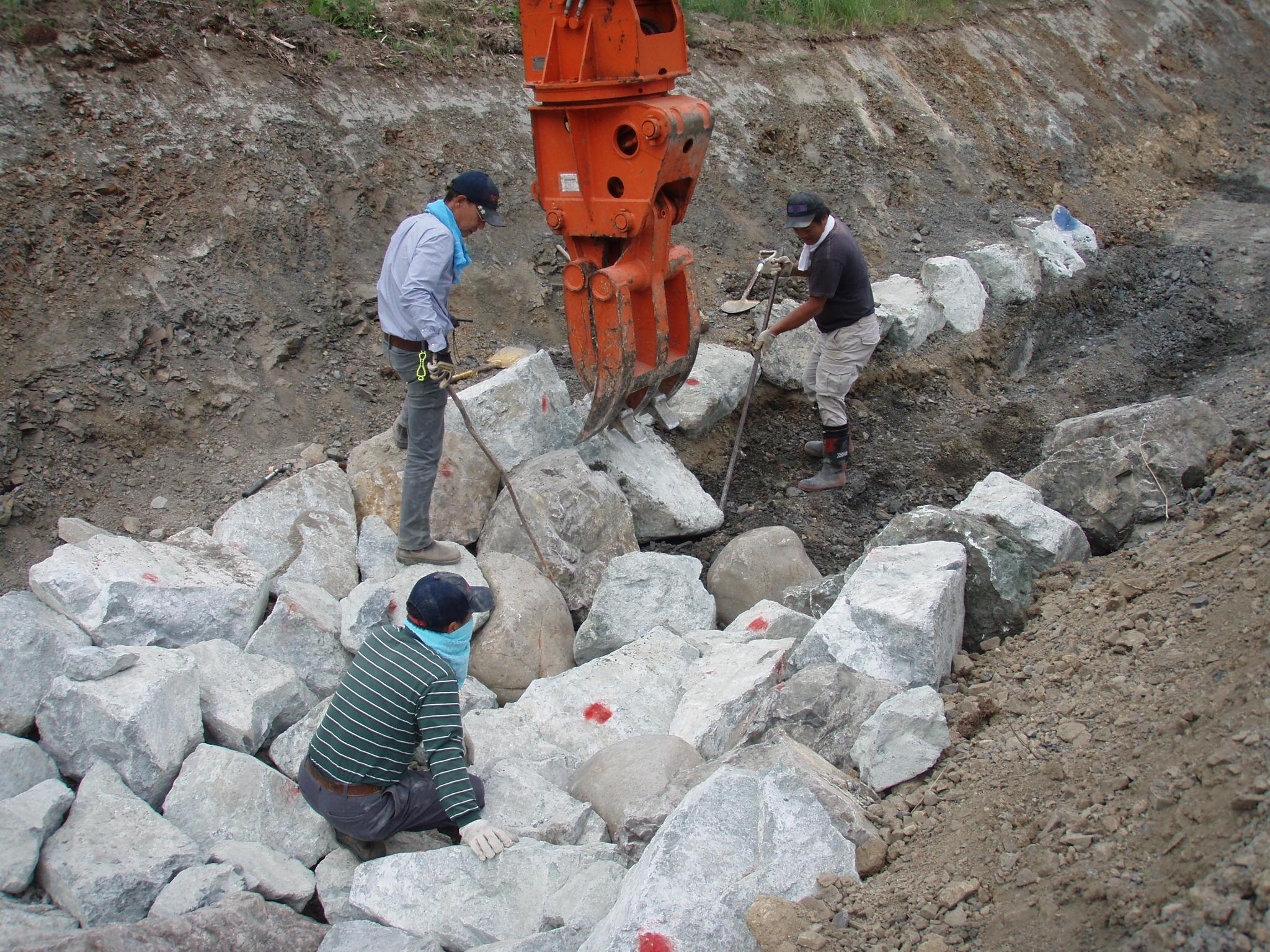
The F-Course at Shibetsu Proving Ground offers terrain capable of “completely breaking” cars in testing their reliability and durability. In other words, it can assess the kind of damage that cars may be subjected to. There are also numerous off-road courses and hills that recreate driving conditions throughout the world.
Fukuoka says Shibetsu differs from the test course at Tahara Plant, which is used to carry out damage tests, in that Shibetsu has courses for testing interference and drivability on rough terrain. These roads were built manually, one at a time, by Sawada and Fujita, based on Fukuoka’s knowledge.
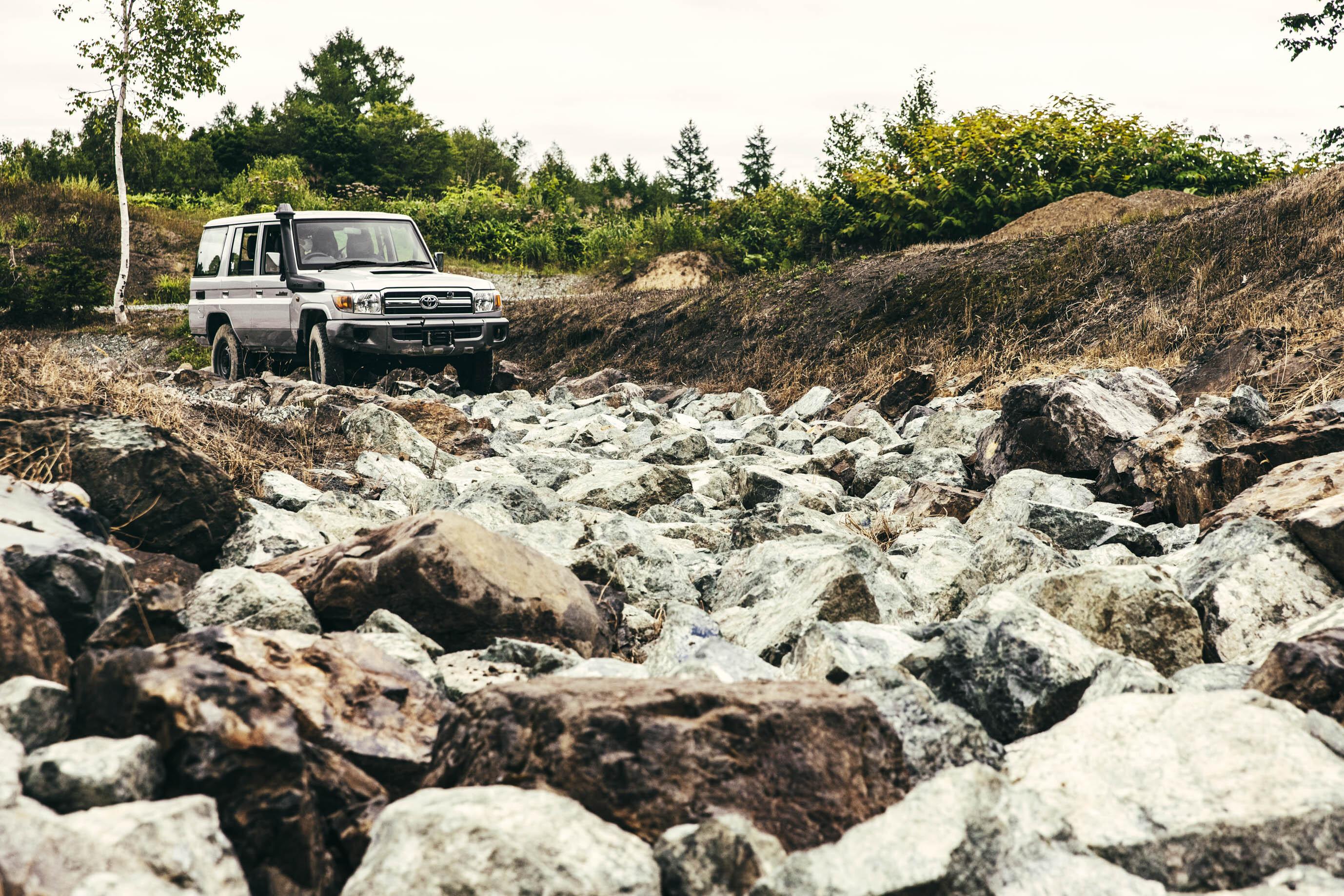
Then Koyari added his comment.
Koyari
The test course was constructed manually under Fukuoka’s supervision, so there are numerous places that are difficult to get through. I was awestruck when I first visited the place. The Land Cruiser has to get through this course. Or rather, a car can only be called a Land Cruiser when it gets through. Tests are carried out by Fukuoka, so that’s something I leave entirely up to him.
Incidentally, I still remember from the time of construction that there’s a particularly difficult forest course (that no one can get through) at the back of the site. Fukuoka told me that I wouldn’t be able to call myself a Land Cruiser Chief Engineer without being able to get through this course. Being an engineer who hates to lose, I stood up to take on this challenge and fought desperately to complete the course. It made me realize as an engineer that the development of the Land Cruiser has been made possible because of the existence of this course, which allows the vehicle to be taken to its limit.
Part 2 will take a look at the actual F-Course.
Takanobu Fukuoka
Fukuoka joined Toyota in 1971. He was assigned to the Vehicle Performance Testing Section of Engineering Division No. 3, where he was placed in charge of testing and evaluating the Century, Celica, Carina, EVs, etc. From 1982, he was placed in charge of testing and evaluating the Blizzard, and the Land Cruiser 60, 70, 80, 90, 100, 105, 120, 150 and 200 Series. He retired from Toyota in 2016, but in October that year, joined Toyota Technocraft Co., Ltd. (currently Toyota Customizing & Development Co., Ltd.), where he has been involved in the advanced development of the Land Cruiser 300 Series. His Land Cruiser development contract expired in 2021. Fukuoka is currently involved in constructing a test course for the LUNAR CRUISER, the manned pressurized rover jointly developed by JAXA and Toyota, and is carrying out tests on its driving performance.
Sadayoshi Koyari
Project General Manager, MS Product Planning, Mid-size Vehicle Company
Koyari joined Toyota Motor Corporation in 1985. As part of Engineering Division 1, he worked on chassis design for the Hilux and Land Cruiser Prado. From 1996, he was responsible for product development at Toyota Development Center 3; Since 2001, Koyari was involved in product development for the Land Cruiser and the new frame platform as Project General Manager. In 2007, he was appointed Chief Engineer at Toyota Development Center 1, and is currently in charge of the Land Cruiser 70 Series and the Land Cruiser Prado.

